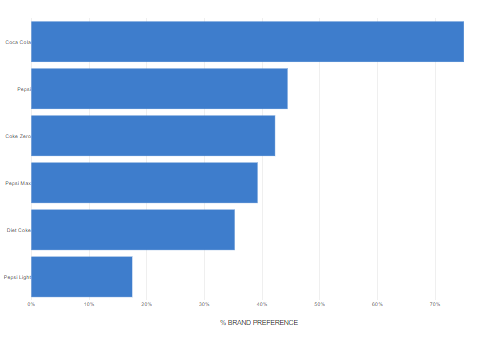

BAR GRAPH BUILDER SERIES
You can also collect stacked bar or column charts into multiple groups if you have several series on your chart.Ī bar chart displays values from left to right, which may be more intuitive when displaying data related to durations. If more than three series are present on the chart, consider using a stacked bar or column chart. This means that in a bar chart, you have more space for category labels to be displayed along the y-axis as a list that reads from top to bottom.īar and column charts are most commonly used to show comparisons between groups.

The category axis is the vertical axis (or "y-axis") and the value axis is the horizontal axis (or "x-axis").

A bar chart that shapes the bars as cylinders on a 3D chart.īar charts have their axes reversed. A bar chart that shows individual series in separate rows on a 3D chart.ģD cylinder. If there is only one series in your chart, all the bars will fit to 100% of the chart area.ģD clustered. A bar chart where multiple series are stacked vertically to fit 100% of the chart area. If there is only one series in your chart, the stacked bar chart will display the same as a bar chart. A bar chart where multiple series are stacked vertically. You can create and modify paginated report definition (.rdl) files in Microsoft Report Builder, Power BI Report Builder, and in Report Designer in SQL Server Data Tools. The bar chart is well suited for this data because all three series share a common time period, allowing for valid comparisons to be made. The following illustration shows a bar chart.
BAR GRAPH BUILDER HOW TO
For more information about how to add data to a bar chart, see Charts (Report Builder and SSRS). It is also popular for showing categorical information since the categories can be displayed horizontally. For this reason, it is popular for representing data that occurs over time, with a finite start and end date. The bar chart is the only chart type that displays data horizontally. The plain bar chart is closely related to the column chart, which displays series as sets of vertical bars, and the range bar chart, which displays series as sets of horizontal bars with varying beginning and end points. If you have a Word document open, you now will be able to paste the qualitative bar chart into the Word document.Applies to: ✔️ Microsoft Report Builder (SSRS) ✔️ Power BI Report Builder ✔️ Report Designer in SQL Server Data ToolsĪ bar chart displays series as sets of horizontal bars in a paginated report. If you close the window, the change will appear in the original graph. Then you can make any changes that are necessary. You should eventually see the cursor in the title you want to change. If another window appears, just close it. Click once and then twice (slower than a double click) on the axis label you want to change. If you want to change the axis titles, right click on the graph and then choose “Edit Content” and then choose “In a Separate Window”.

In the “Element Properties” window, in the white rectangle under “Content”, type in a title for the graph and then click on “Apply”.Ĭlick on “OK” in the “Chart Builder” window and your qualitative bar chart will appear. Under “Variables”, click on the variable you want to graph and drag it onto the x-axis (horizontal axis) of the bar chart.Ĭlick on the “Titles/Footnotes” tab and click on the box next to “Title 1”. Make sure the “Gallery” tab is selected, and under “Choose from” pick “Bar”.Ĭlick on the “Simple Bar” icon in the upper left corner and drag it into the large white rectangle with the blue type in the upper right side of the window. Click on the circle next to “Type in data”.Ĭlick on “Graphs”, choose “Chart Builder” and click “OK” in the window that opens.


 0 kommentar(er)
0 kommentar(er)
